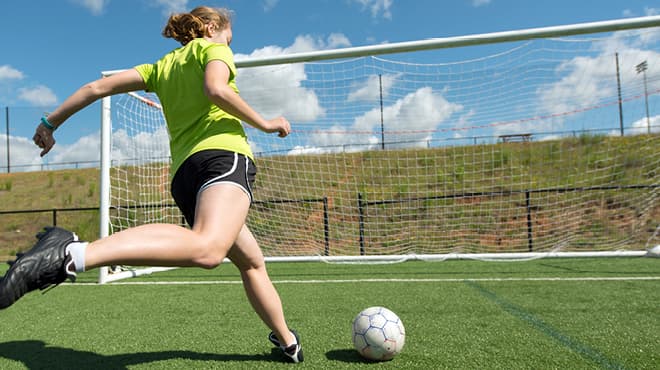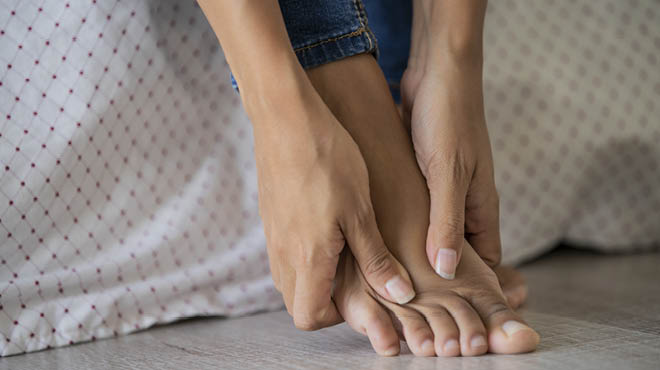Recent Posts
From ski slopes to skating rinks, winter sports hold risks for ortho injuries

Winter is filled with fun outdoor sports, including ice skating, sledding and downhill skiing. These activities are excellent for improving cardiovascular health and provide enjoyable entertainment for all ages. But what happens when muscle and joint injuries occur? At the ice rink or on the slopes, injuries can happen in the blink of an eye. Musculoskeletal injuries can be debilitating and may require medical intervention from an orthopedics specialist.
Be aware of these common winter sports-related injuries and some tips for preventing them from occurring.
Torn ACL
The anterior cruciate ligament, or ACL, is one of the major stabilizing ligaments in the knee, and injury to it can result in an unstable knee. ACL reconstruction surgery is done to reconstruct the torn ligament and restore stability to the knee. ACL injuries commonly occur during winter sports involving sudden stops, changes in direction or twisting, such as downhill skiing.
During ACL reconstruction surgery, the torn ligament is removed and replaced with a piece of tendon from another part of your knee or a deceased donor. This surgery is an outpatient procedure that's performed through small incisions around your knee joint.
Torn meniscus
The meniscus is a C-shaped piece of cartilage in your knee, with one in the inside and one in the outside of the knee compartment. A torn meniscus is one of the most common knee injuries. Actions that forcefully twist or rotate your knee, especially when putting the pressure of your full weight on it, can lead to a torn meniscus.
If you have torn your meniscus, you may experience these signs and symptoms in your knee:
- A popping sensation
- Swelling or stiffness
- Pain, especially when twisting or rotating your knee
- Difficulty straightening your knee fully
- Experiencing what feels like a block to moving your knee, as if your knee were locked in place
If, after an injury, you can't move your knee in the usual way, it's important to see your doctor as soon as possible. Conservative treatment, such as rest, ice, medication and possibly an injection, sometimes is enough to relieve the pain and maintain normal knee function. In other cases, a torn meniscus requires surgical treatment. If your knee remains painful, stiff or locked, your doctor may recommend surgery. Depending on the location of the tear, it may be possible to repair it. If the tear can't be repaired, the meniscus may be surgically trimmed. Surgery may be done through tiny incisions using an arthroscope. After surgery, you'll need to do exercises to regain knee range of motion, strength and stability.
Wrist fracture
A broken wrist, or wrist fracture, can involve the small bones in the wrist or the ends of the forearm bones. Wrist fractures most commonly occur when people try to catch themselves during a fall and land on an outstretched hand.
Treatment may include a splint, cast or surgery, depending on the severity and amount of displacement of the fracture. Surgery often involves using pins or plates and screws to hold the broken bones in the appropriate position while they heal.
Rehabilitation is an integral part of the healing process, with the primary goals of restoring range of motion, strength and function.
Preventing injury
It's impossible to prevent the unforeseen events that often cause musculoskeletal injuries, but these essential tips may help you:
- Eat a nutritious diet with adequate calcium and vitamin D.
- Get plenty of weight-bearing exercise.
- Incorporate resistance training to strengthen muscles, bones and connective tissue.
- Loosen up tight muscles by stretching eight to 10 minutes before and after exercise.
- Move regularly throughout the day to stimulate blood flow to your arms and legs.
- Quit smoking if you're a smoker.
Don't let the frigid weather or fear of injuries keep you from enjoying wintertime sports. Whether you're hitting the slopes or sledding down a hill with your kids, listen to your body and enjoy winter activities safely.
Next steps:
- Find an orthopedic specialist near you.
- Learn how to avoid winter slips and falls.
- Get the facts about knee pain.
- Practice walking safely in winter.
Robert Cates, D.O., is an orthopedic surgeon in Austin, Minnesota.






